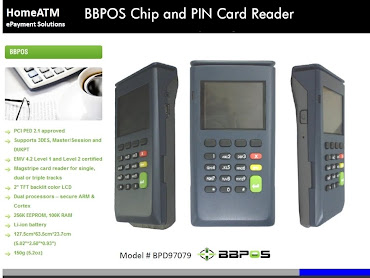Mercator maps 2008 Japanese payment card market
Boston, Dec. 9, 2008 -- With close to 800 million credit and debit cards in circulation at the end of 2007, Japan is one of the countries with the highest payment card penetration. Japanese residents on average have 6.2 credit or debit cards per person, higher than their peers in most card markets around the world including the United States where an average resident has 3.6 cards. However, the usage of these payment cards is quite low compared to their large numbers. An average Japanese resident spent just about $30 (US) on their credit and debit cards in 2007 while the number was close to $180 (US) in the US. As a result, Japan remains a cash-centric society and the payment market opportunities remain largely untapped by electronic payments.
The relatively low card usage in Japan can be attributed to a variety of factors, including but not limited to culture, industry infrastructure, card acceptance, and regulatory environment, among many others. For Japanese consumers, however, the reason could be as simple as that: it just doesn't provide enough value in terms of service quality, convenience, and flexibility for consumers to change their preference of cash.
As a result, despite credit card's relatively healthy growth in the past 5 years, it still has a long way to go in terms of becoming Japanese consumer's preferred payment method at POS. The industry has been undergoing a series of major restructuring and consolidation to adapt to changes in the market, competitive landscape and regulatory environment. As for debit cards, the market struggled in the past three years after the initial high-speed growth in the first several years after it was officially introduced in 2000.
However, the emergence of electronic money, namely payment cards and devices powered by a contactless chip, could bring a fundamental change to the way Japanese consumers make payments. Backed by prepaid card accounts as well as credit card accounts, e-Money services, have quickly become the most popular payment method at POS (besides cash of course, at least for now).
Terry Xie, Director of Mercator Advisory Group's International Advisory Service and principal analyst on the report, comments,"The e-Money services will be key to tomorrow's Japan payment card market. Its impact on the increasing use of prepaid cards are well known. But its implications are much more far-reaching than many have realized. For the first time in the history of Japan payment card market, electronic payment methods have become a really viable alternative to cash for payment at POS with its un-precedent level of convenience and flexibility. This will fundamentally change Japanese consumers' perception of electronic payments and its importance cannot be over-estimated. It is the critical market for not just prepaid cards but also credit and debit card industries in Japan. Especially for debit cards, unless the debit card industry figures out a way to get a piece of the fast growing e-Money market, their current struggles will continue."
The most recent report from Mercator's Credit Advisory Service provides an update of the Japan credit card market since 2002, which is the last year discussed in our previous Japan report. Key issues discussed in the report include market growth, profitability, changes in regulation, competitive landscape, recent restructuring, and consolidation activities, plus increasingly active international players. Key market stats, key strategic issues, and their implications on the overall market development are also discussed.
Highlights from this report include:
* Cash remains king in Japan, but this situation could change if Japan's payment card industry could find a way to offer the value proposition of cash replacements in different scenarios.
* Credit cards enjoy the highest usage rate among electronic payment products in Japan, but profit margins remain relatively thin despite high merchant fees. Japanese consumers have been using credit cards like charge cards, thus limiting the interest income potentials. Recent changes in consumer lending law do not help the cause.
* Debit card usage rates have remained low in Japan despite initial rapid growth immediately after the J-Debit scheme was introduced. Unless the industry could improve services and offer more convenience, it could face significant challenges going forward.
* E-Money emerged as the fastest growing market segment and its implications are far reaching. At the same time, there are critical issues that still need to be addressed.
* Restructuring and consolidation in the industry, and the increasing roles of non-bank and international players will significantly alter the competitive landscape in the Japanese payment card industry.
This report contains 27 pages and 7 exhibits.
All Top Banking
Powered by Blogger.









0 comments